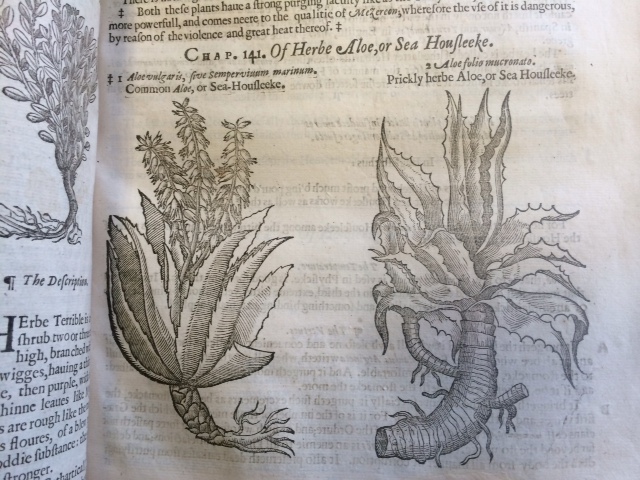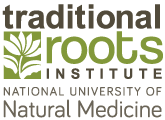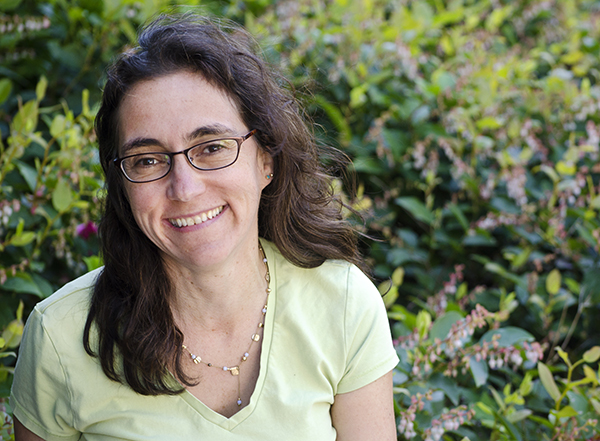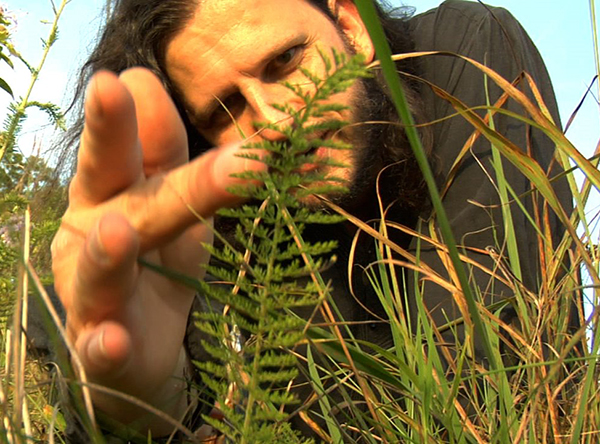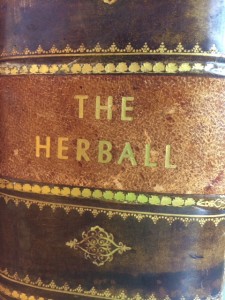
Today I held a 400-year-old copy of Gerard’s Herball in my hands. (It’s actually only 380 years old, but who’s counting.)
I got to lift it, touch its cover, open and turn its pages, read its words. The crisp paper is cotton or linen fiber, and is in better shape than some of the decades-old books floating around in my home.
I was raised to revere books. For my 16th birthday, my father bought me a Webster’s 3rd Unabridged Dictionary, because he’d always wanted his daughter to be a “woman of letters.” An old college professor once told me, “when you grow up you’re going to be a library.” (Note, not a librarian, a library.) My father bought me both printed volumes of King’s American Dispensatory when I graduated from medical school.
And today I held a 380-year-old copy of Gerard’s Herball. In my hands. I’m still a little bit shaky with reverence and awe.
Perhaps most amazing: You can hold it in your hands, touch it, turn its pages and read its words, too.
The book is in the NUNM library, which is open to the public and one of the Portland’s great undiscovered gems. The library is one of the most comprehensive resources for books, tapes and videos about herbal and other branches of natural medicine.
The Herball is part of the Chilton Collection, one of 2,000 books on botanical and medical topics amassed over 40 years and donated in 2010 by Mike and Simone Chilton. Mike is on the NUNM Board of Regents, which helps spread the word about NUNM’s work. And he is a hero to the Traditional Roots Institute for help bringing the Smithsonian scholars to town.
I should point out that Traditional Roots isn’t just about old or ancient texts. There’s just been a lot of that on our plate lately. We are herb geeks, however, thirsty for herbal wisdom. So of course we get excited about these links to Western herbalism’s lineage.
These are iPhone photos taken in the library this afternoon, shaky with awe while holding the book open with one hand. You certainly can find better images online. But know that these were taken by someone who actually touched this 380-year-old book — a book that’s available to you and anyone who wants to come by and put their (clean) hands on history.
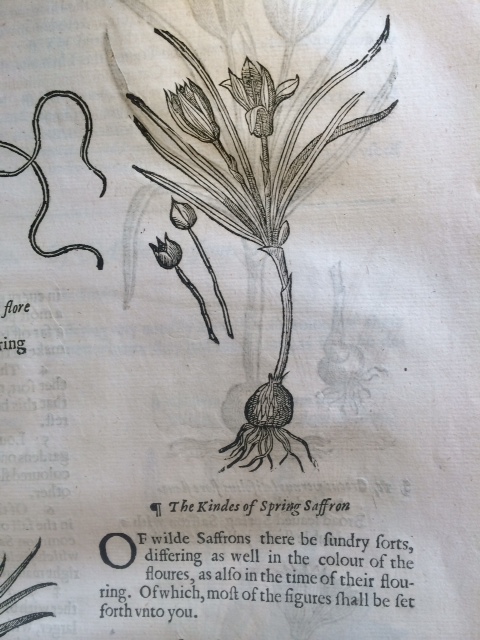
“Of wilde Saffrons there be sundry sorts, differing as well in the colour of the floures, as also in the time of their flouring. Of which, most of the figuers shall be set forth unto you.”
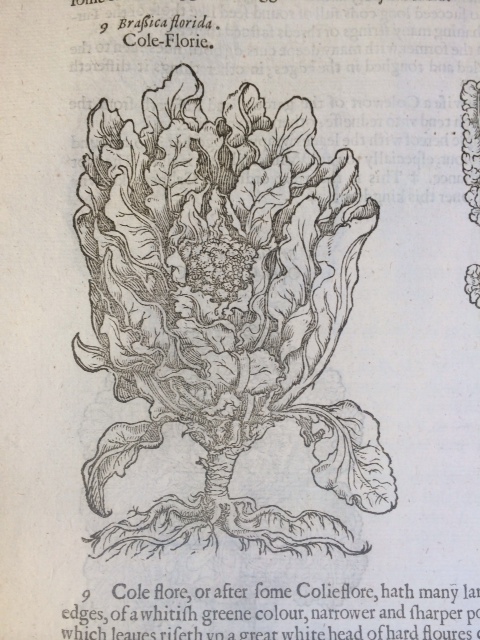
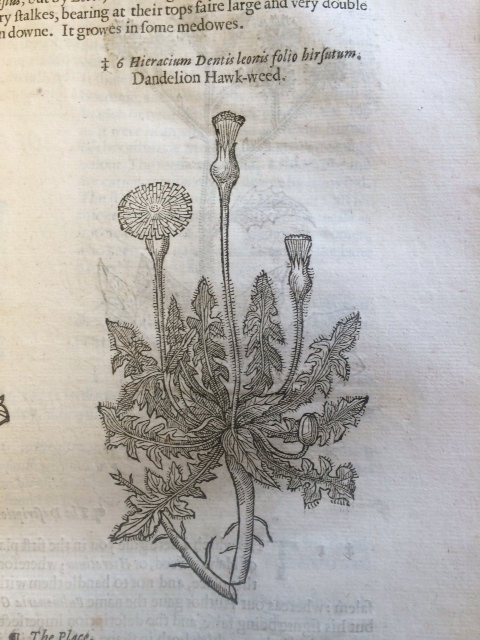
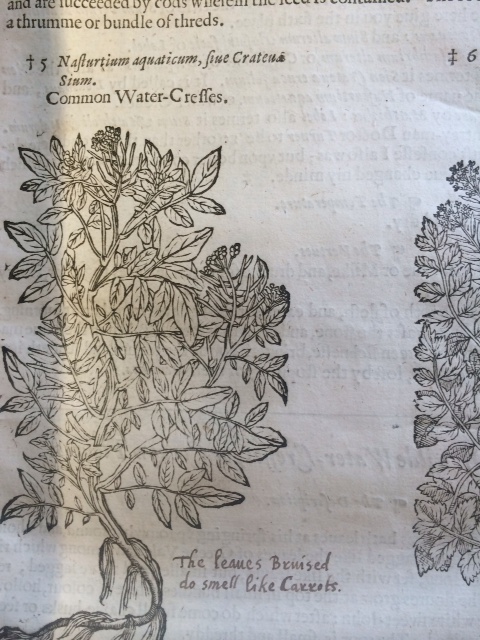
The hand-written note at the base reads, “The leaves Bruised do smell like Carrots.”
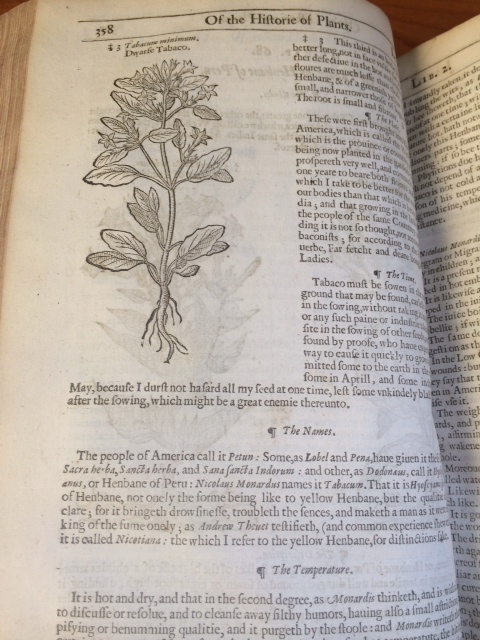
“It is hot and dry, and that in the second degree…”
